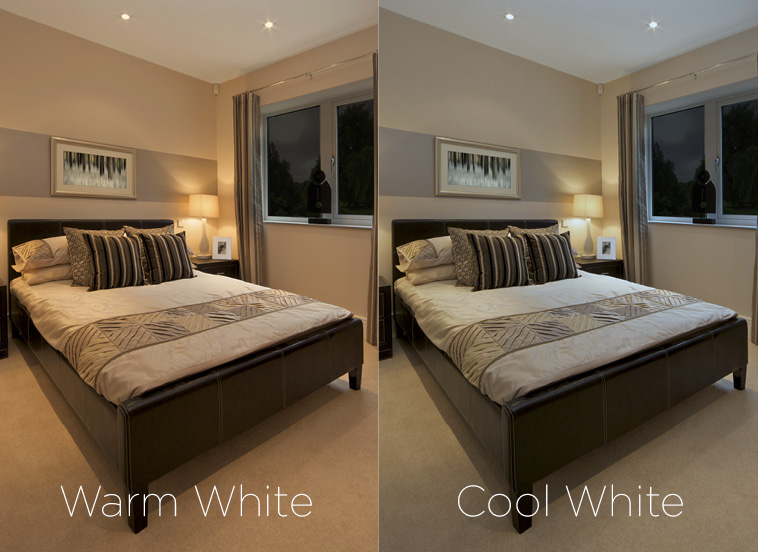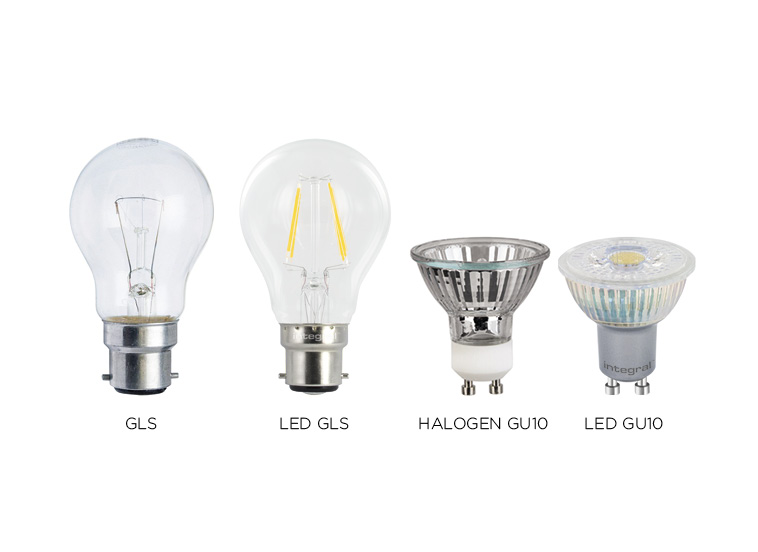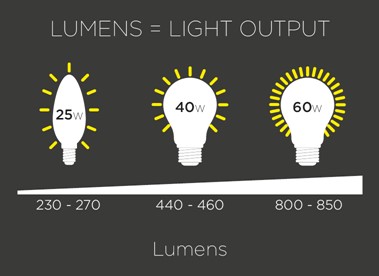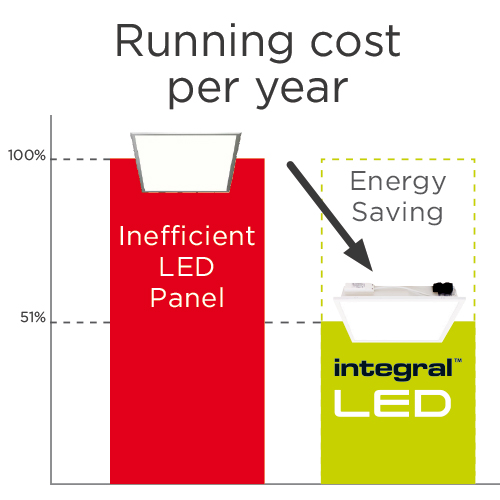What are Lumens?
Think of lumens as a "new" way of knowing how bright a lamp is. Lumens = Light Output.
In simple terms, Lumens (denoted by lm) are a measure of the total amount of visible light (to the human eye) from a lamp or light source. The higher the lumen rating the “brighter” the lamp will appear.
We have all bought 50W or 60W conventional bulbs or spotlights in the past expecting a certain level of brightness. This incorrectly linked power consumption (Watts) to light output.
More light, less energy (Watts) with LED
With low energy LED lamps, more light output can be achieved with much less power consumption. For example, a 6.5W LED lamp will give a similar light output to a 50W Halogen bulb. That's 87% less energy for the same light output! When using LED more energy is converted to light rather than heat. As technology improves, more lumens will be produced using even less Watts - i.e. more lumens per Watt. So as a result, using Watts as a guide to brightness is no longer relevant.
Lumens - Conventional vs LED lamps
To achieve the same light output of a 60W conventional bulb you will need an LED lamp with around 800 - 850 lumens. All Integral LED lamps have the lumen rating clearly marked on the packaging and on the lamp base . We also provide a conversion guide to the "old wattages" on the pack e.g. 11.5W LED = 60W conventional.
Below is an approximate guide to help you decide the lumen rating for your LED replacement lamp.
Lumens Per Watt (lm/W)
This figure is a useful way to measure the efficacy of lighting products by measuring the total light output in Lumens divided by the power usage in Watts. You can think of this as similar to miles-per-gallon in a car, as a higher lm/W means higher efficiency and lower running costs compared to similar but less efficient models.
For example, the highly efficient Compact High Performance+ Back-lit LED Panel offers light output of 3500 Lumens for 23 Watts of power.
3500lm/23W = 152lm/W
In comparison, a popular but less efficient edge-lit LED panel may provide 3600 Lumens for 45W.
3600lm/45W = 80lm/W
In simple terms, the 152lm/W panel is 51% cheaper to run than the 80lm/W panel.
We recommend that you make lm/W one of the first things you look at when choosing LED panels.
Lumens and Useful Lumens
For non-directional bulbs such as a globe, golfball or candle shape, the total lumen output is calculated for all directions. With a directional bulb such as GU10 spotlight, the light is emitted in many directions, some of this light (spill light) may not be useful but it is counted in the total lumen rating.
To make comparisons fairer and easier the EU has recently introduced a “useful lumens” rating. This is a measurement of useful light emitted in a standardised 90 degree cone (see image). The “useful lumen” rating is normally lower than the total lumen output but has more relevance to a spotlight bulb where useful light is in a forward focussed direction.
| Old Watts | Approx Lumens |
|---|---|
| 25 W |
230 - 270 Lamp |
| 35 W |
250 - 280 Spotlight 200 - 300 Useful Lumens 390 - 410 Lamp |
| 40 W |
440 - 460 Lamp |
| 50 W |
330 - 400 Spotlight 350 - 450 Useful Lumens |
| 60 W |
800 - 850 Lamp |
| 75 W |
1000 - 1100 Lamp |
| 100 W |
1500 -1600 Lamp |
How many lumens do I need?
There is no firm answer – it will depend on a number of factors including; room size and shape, height of ceilings, colour scheme, type of lamps & fitting, task areas and needs of the user.
As a basic guide; below are the lumens required per Sq M (10.76 sq ft) for different room settings. In many cases a mixture of general and task lighting will be required.
| Area | Lumens/Sq M |
|---|---|
| Kitchen | 300-400 |
| Kitchen (Task) | 700-800 |
| Living Room | 400-500 |
| Hallway | 300 |
| Bedroom | 300-400 |
| Bedroom (Task) | 700-800 |
| Bathroom | 500-600 |
| Bathroom (Task) | 700-800 |
| Reading Area | 400 |
Suggested Articles:



HIGHEST
QUALITY
COMPETITIVE
PRICES
EXPERTISE
EXTENSIVE
STOCK
NEWSLETTER
Sign-up to our newsletter and stay up to date with the latest product information and special offers.




